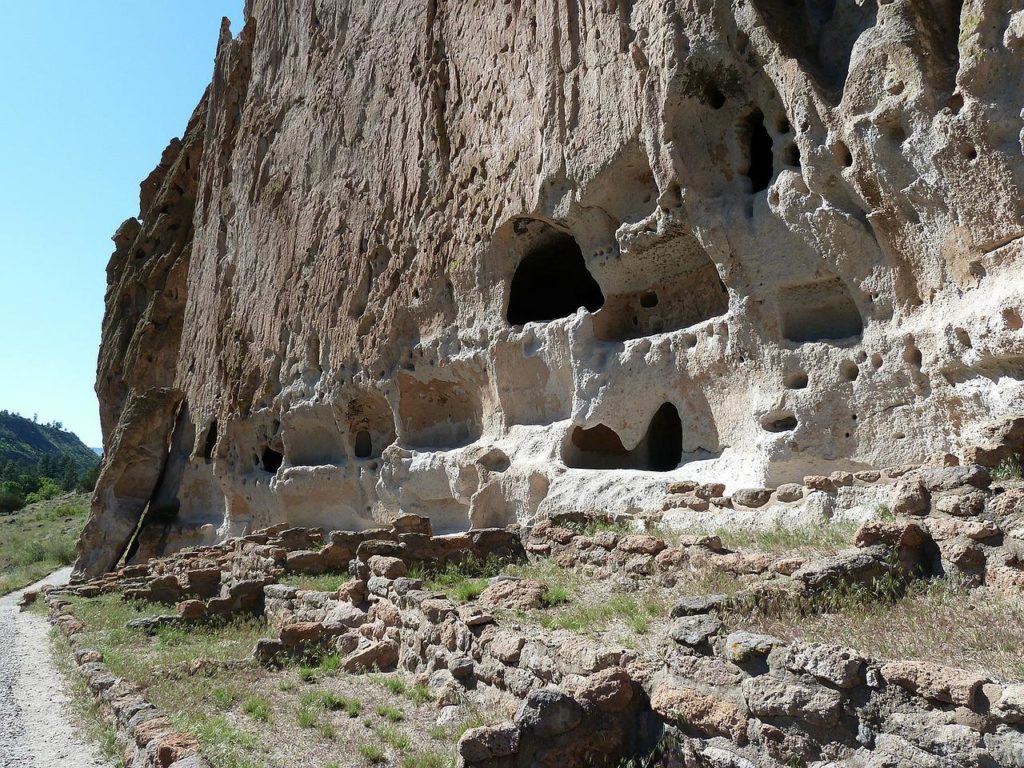
Article Summary: Historic Sites In New Mexico
Historic Sites In New Mexico. More Than Just Parks has 15 incredible must-see sites for you.
I’ve been to so many of these amazing places since retiring from teaching in 2018. Did I mention that I taught history? I spent a lifetime teaching about the history behind these momentous sites. Then I got to see them firsthand. And now I’m sharing the stories of these incredible places with you. It doesn’t get any better than that!
I taught history for over a quarter of a century. Now I enjoy researching and writing these articles for More Than Just Parks.
I’m going to give you my list of the Top 15 Historic Sites in New Mexico that you’ll want to see. These are our top 10 sites which we will provide in reverse order. We’ve got amazing monuments, fascinating exhibits, historic museums, legendary figures and so much more.
To be clear, this list includes national park sites (as in sites managed by the National Park Service) as opposed to national parks. It also includes sites not managed by the National Park Service. After all, we’re more than just parks!
Top 15 Historic Sites In New Mexico
Table Of Contents: Historic Sites In New Mexico
15. Fort Bayard Historic District
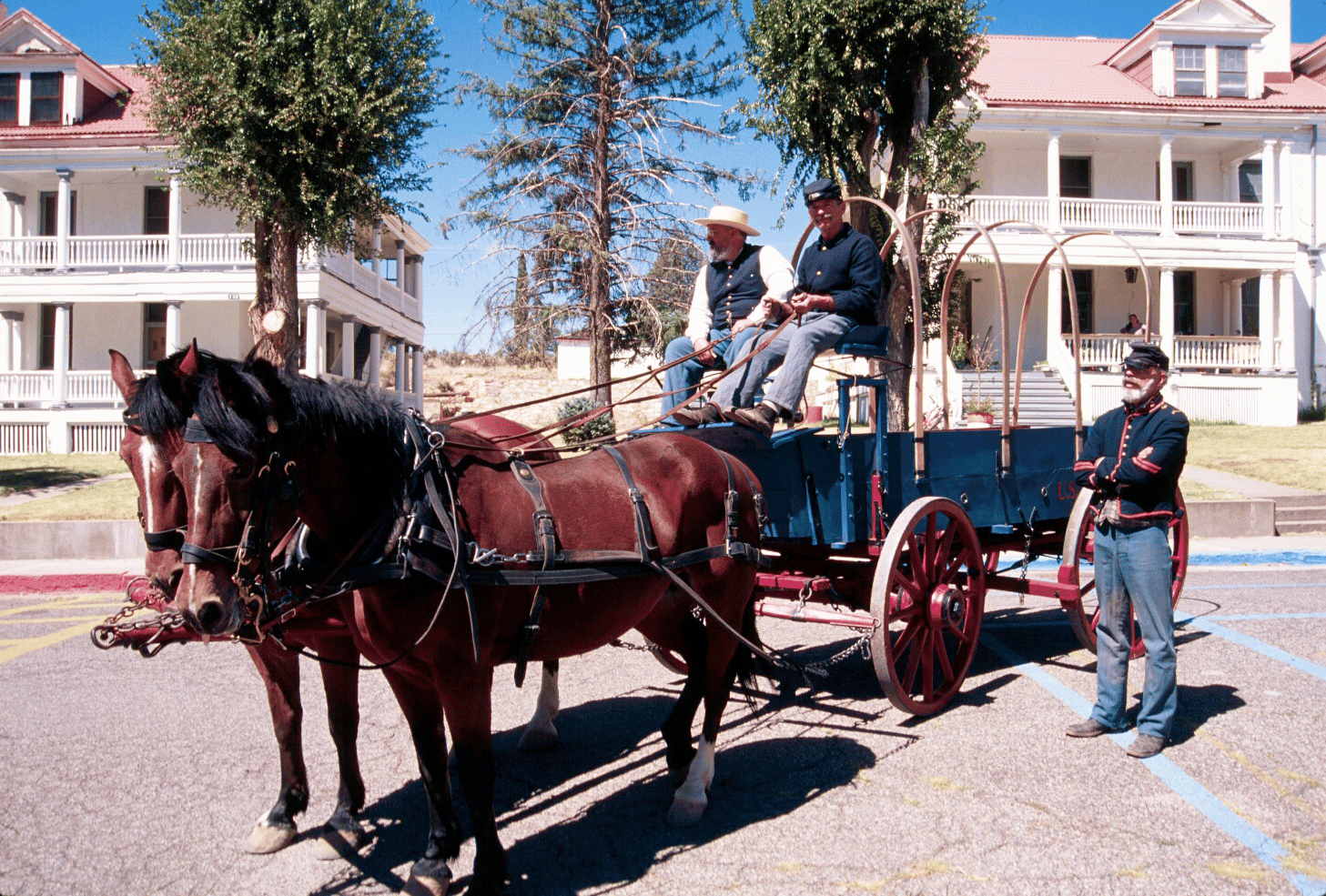
New Mexico has one of America’s most pristinely diverse landscapes, from white sands and red rocks to soaring mountains and wildflower fields. It’s also home to a unique cultural and culinary quilt of Anglo, Spanish and Native American heritage.
And, let’s not forget the amazing historic sites that await you when you journey to the Land of Enchantment.
At More Than Just Parks, we hope that you’ll be enchanted with our Top 15 Historic Sites In New Mexico. And we’ve got quite an amazing list for you beginning at #15 with Fort Bayard Historic District.
Fort Bayard is a historic landmark located near Silver City, New Mexico. The fort has a rich and varied history, having served as a military fort, a prison of war camp during World War II, and a tuberculosis hospital.
Fort Bayard Has Quite A History
It is particularly notable for its association with the Buffalo Soldiers, a group of African American soldiers who were stationed at the fort and played an important role in fighting against the Apaches.
Fort Bayard was established in 1866 as a military fort to protect settlers and travelers from Apache raids. It was also used as a base for campaigns against the Apaches, and several units of Buffalo Soldiers were stationed there.
During World War II, the fort was used as a prison of war camp for German and Italian prisoners. After the war, it was converted into a tuberculosis hospital, serving as a treatment and research center for over 30 years.
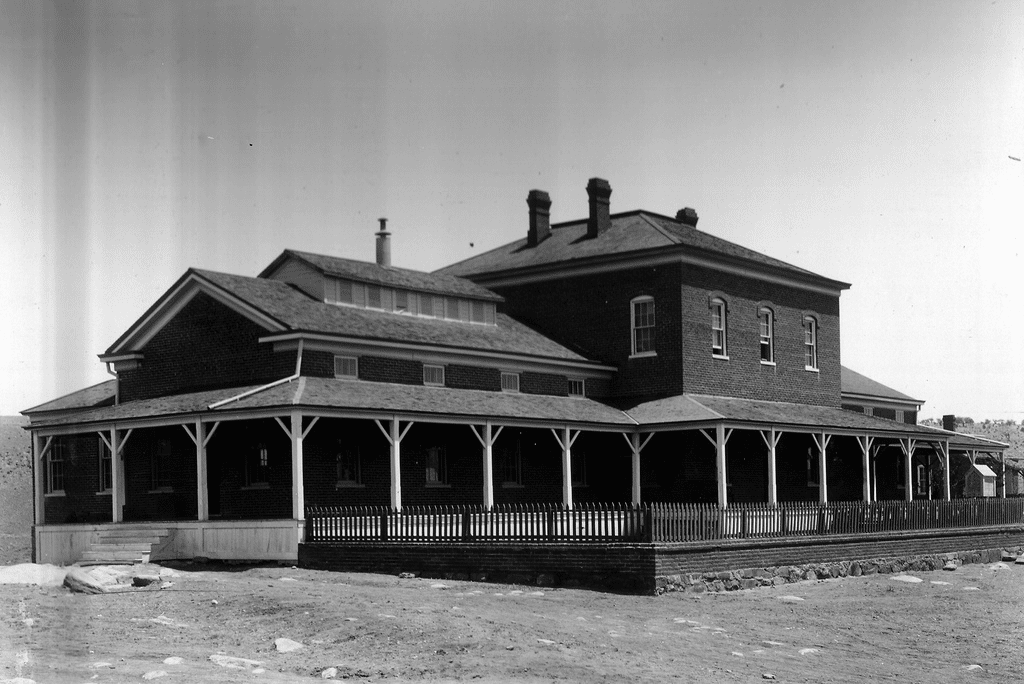
Things To Do At Fort Bayard
Here are some things to do at Fort Bayard Historic District:
- Take a guided tour – One of the best ways to learn about the history of Fort Bayard is by taking a guided tour. The Fort Bayard Historic Preservation Society offers guided tours that take visitors through the different buildings and structures in the fort.
- Visit the museum – The Fort Bayard Museum is located inside the historic Officer’s Quarters and features exhibits and artifacts that showcase the history of the fort and the surrounding area.
- Explore the hiking trails – The fort is surrounded by beautiful hiking trails that offer stunning views of the Gila National Forest. The trails range in difficulty, so there is something for everyone.
- Attend a special event – Throughout the year, the Fort Bayard Historic Preservation Society hosts special events such as living history reenactments, music festivals, and art shows.
- Picnic in the park – The Fort Bayard National Historic Landmark has a beautiful picnic area that is perfect for a family outing or a romantic picnic.
- Visit the cemetery – The Fort Bayard National Cemetery is located on the grounds of the fort and is the final resting place of many soldiers and veterans from various wars.
- Visit the historic structures – The fort is home to many historic structures such as the hospital, chapel, and barracks that are open to the public.
- Attend a ghost tour – Fort Bayard is rumored to be haunted, and ghost tours are available for those who are brave enough to explore the paranormal activity in the fort.
14. Mesilla Plaza and Historic District

Next up on our list of the Best Historic Sites In New Mexico is a place which will transport you back in time to the 19th century. At #14, we have the Mesilla Plaza and Historic District.
It’s a cultural and historical landmark located in Mesilla, New Mexico. The district encompasses the city’s central square, Mesilla Plaza, and the surrounding historic buildings, many of which date back to the 19th century.
The Mesilla Plaza is a popular spot for locals and tourists alike, surrounded by restaurants, shops, and museums. It is known for its vibrant ambiance and charming atmosphere.
The Mesilla Plaza and Historic District is a designated National Historic Landmark, with many of the buildings in the district listed on the National Register of Historic Places.
The district includes a mix of architectural styles, including adobe, Victorian, and Greek Revival. The buildings in the district have served various purposes over the years, including as homes, businesses, government buildings, and schools.
A Great Place To Stroll & Admire The Architecture
The Mesilla Plaza is the heart of the community, it is a great place to stroll and admire the architecture of the buildings, and to enjoy the lively atmosphere with outdoor seating, outdoor musical performances, and events like farmers markets, art fairs, and festivals.
Visitors can also visit the historic Basilica of San Albino, a beautiful church that was built in 1855, and the Fountain Theater, a restored theater dating back to 1881.
The district also includes the Mesilla Town Hall, which is now a museum that tells the story of the town’s history, including the time when Mesilla was the capital of the Republic of Mexico.
13. El Santuario de Chimayó
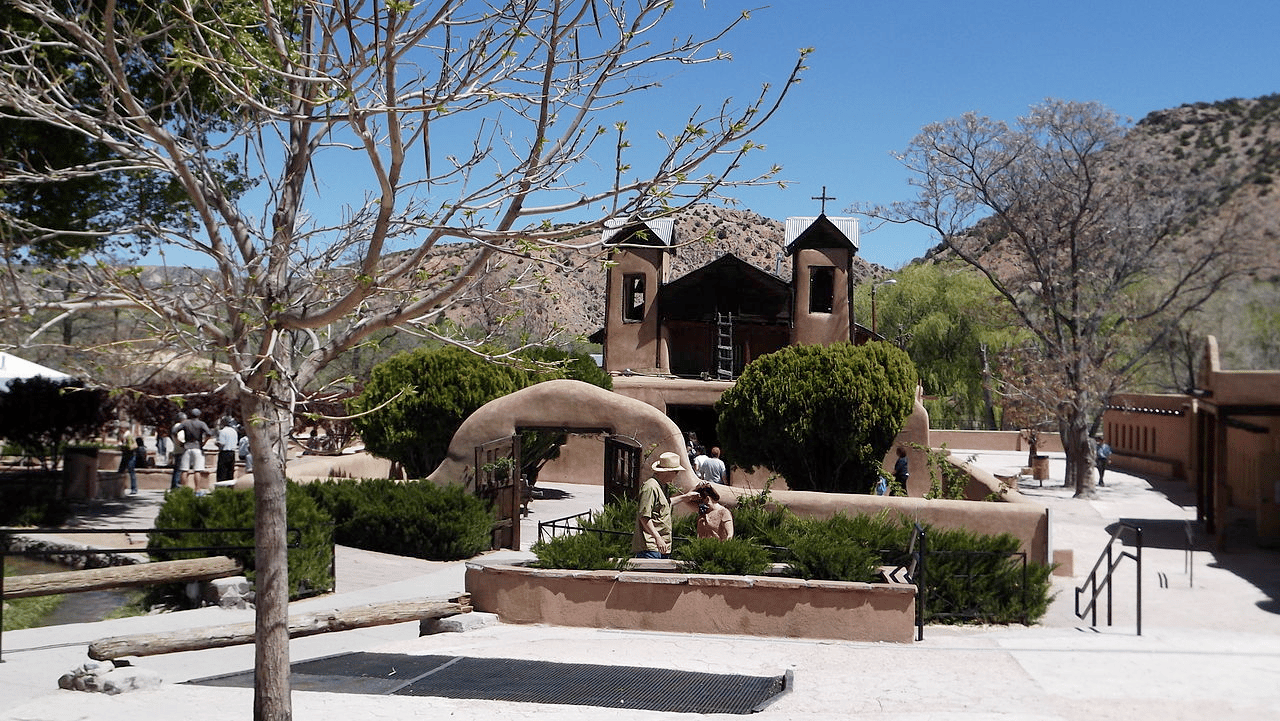
The American Southwest was largely settled by the Spanish who established a series of missions as part of their effort to bring Christianity to the region. One of these places is El Santuario de Chimayó which is #13 on our list of the Best Historic Sites In New Mexico.
El Santuario de Chimayó is a Catholic Church located in Chimayó, New Mexico. The church is known for its spiritual significance and is considered a major pilgrimage site for Catholics, especially those of Hispanic heritage.
The church is built on the site of a former chapel, which was said to have miraculous healing powers. The current church was built in 1816, and is a blend of traditional Spanish colonial and Pueblo architectural styles.
The church is famous for its use of natural materials, such as adobe, and its intricate woodcarvings, and it is also known for its beautiful altar, which is made of carved and painted wood.
Holy Dirt
The church’s most famous feature is the “Holy Dirt,” which is said to have healing powers and is located in a small room behind the altar. Visitors to the church can take a small scoop of the dirt and use it for healing, many of them leave crutches, wheelchairs or other items as an offering after being cured.
El Santuario de Chimayó is a popular pilgrimage destination, especially during the Easter season, when thousands of people make the journey to the church to participate in the “Pilgrimage of Faith.” Many of the visitors walk long distances to reach the church as an act of penance, a symbol of devotion, or as a way of asking for a miracle.
The church is also a National Historic Landmark and open to visitors year-round. Visitors can take guided tours of the church, and learn more about its history and spiritual significance. It’s also surrounded by beautiful natural landscapes, and it is a great place to experience the rich cultural heritage of Northern New Mexico.
12. Acoma Pueblo
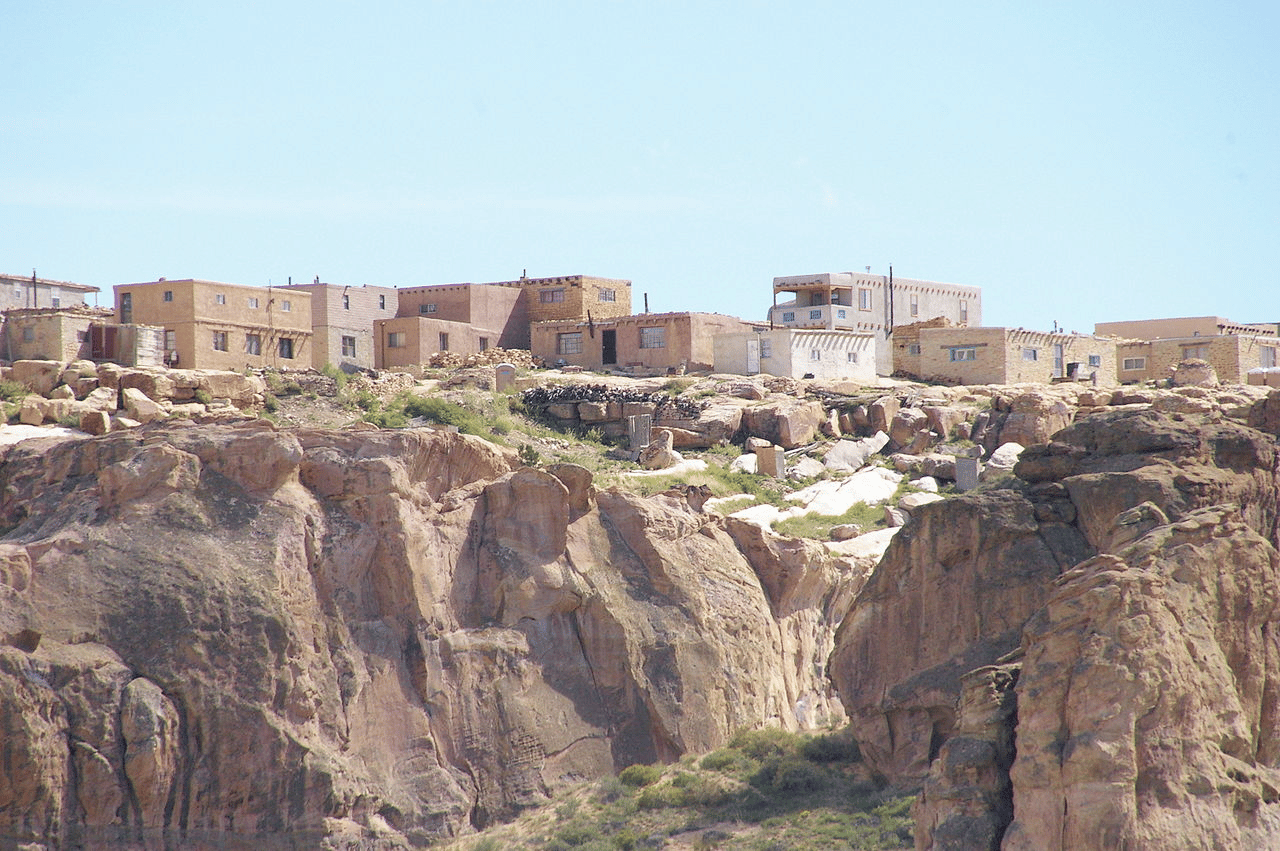
One of the most amazing sites to be seen in New Mexico are the Native American Pueblos. Our next site features these architectural marvels. At #12 on our list of the Best Historic Sites In New Mexico is Acoma Pueblo.
Acoma Pueblo, also known as Sky City, is a Native American pueblo located in western New Mexico. The pueblo is situated on a 367-foot-high sandstone mesa and is considered one of the oldest continuously inhabited communities in North America, with a history dating back more than 800 years.
The Acoma Pueblo is home to the Acoma people, a tribe of the Puebloan peoples, who have lived in the area for centuries.
Acoma Pueblo is known for its unique architecture, including multi-story adobe buildings and traditional pueblo-style dwellings. The pueblo is also known for its art and craft traditions, including pottery, weaving, and jewelry making.
Visitors to the pueblo can take guided tours of the pueblo, which include visits to the Acoma Cultural Center, the Acoma Sky City, and the San Esteban del Rey Mission.
It’s A UNESCO & World Heritage Site
The Acoma Sky City is a UNESCO World Heritage Site and National Historic Landmark, it is an ancient village located on top of a 367 ft (112 m) sandstone mesa, the village has been continuously inhabited for over 800 years.
Visitors can take guided tours of the village, which include visits to the ancient homes, kivas, and the San Esteban del Rey Mission church.
The Acoma Pueblo is also known for its traditional dances and ceremonies, which are open to the public and take place throughout the year.
Visitors can also purchase traditional Acoma pottery, jewelry, and other crafts from local artisans. Acoma Pueblo is a unique and fascinating place to visit and learn about the rich cultural heritage of the Southwest.

11. Palace of the Governors

Our next historic site is the oldest continuously occupied public building in the United States, dating back to the early 17th century. At # 11 on our list of the Best Historic Sites In New Mexico is the Palace of the Governors.
It was originally built as the seat of government for the Spanish colony of Santa Fe, and served as the governor’s palace and administrative center for the region.
The palace is made of adobe and has a traditional Spanish colonial architectural style. The palace has a plastered exterior and a flat roof with a central courtyard. Inside, the palace features a series of rooms with high, beamed ceilings and traditional kiva fireplaces.
The palace has undergone several renovations and additions over the centuries, but much of the original structure remains intact.
The Palace Hosts Cultural Events & Exhibits Throughout The Year
Today, the palace serves as a history museum and is open to the public. Visitors can take guided tours of the palace, which include information about the building’s history and architecture, as well as the history of Santa Fe and the region.
The palace also hosts a variety of cultural events and exhibits throughout the year, including art shows, lectures, and traditional music performances.
The Palace of the Governors is a National Historic Landmark, and a part of the Santa Fe Plaza Historic District, which is also a National Historic Landmark.
It’s considered a significant cultural and historical site, and is a unique and interesting place to visit for those interested in the history and culture of the Southwest.

Top 10 Historic Sites In New Mexico
10. Historic Capulin Volcano National Monument

We’re on to the Top 10 Historic Sites In New Mexico. Imagine visiting a volcano that last erupted 60,000 years ago! Our next historic site is hot stuff indeed! At #10 on our list of the Best Historic Sites In New Mexico is Capulin Volcano National Monument.
It’s a volcanic cinder cone located in northeastern New Mexico. The volcano is considered to be one of the best-preserved volcanoes in the country and is the central feature of the national monument. It last erupted around 60,000 years ago and stands at 8,182 feet above sea level.
The monument encompasses over 4 square miles of diverse landscape, including the volcano, its surrounding slopes, and the surrounding grasslands and forests.
The volcano has a well-defined crater which is 800 feet in diameter and 175 feet deep, visitors can drive to the rim of the volcano and hike to the crater’s edge for a great view.
There are also several hiking trails that wind around the volcano, providing visitors with the opportunity to explore the diverse landscape and wildlife.
Learn About The Volcano’s Geology, History & Natural Resources
The monument also has a visitor center that provides information about the volcano’s geology, history, and natural resources. The center also offers educational programs and ranger-led tours of the volcano.
Capulin Volcano National Monument is a great place to learn about volcanic geology and the natural history of the region. The park is open year-round, but some of the facilities may be closed during the winter months due to snow.
It’s a great place for hiking, picnicking, and wildlife viewing and also a unique opportunity to explore a volcano in the United States.
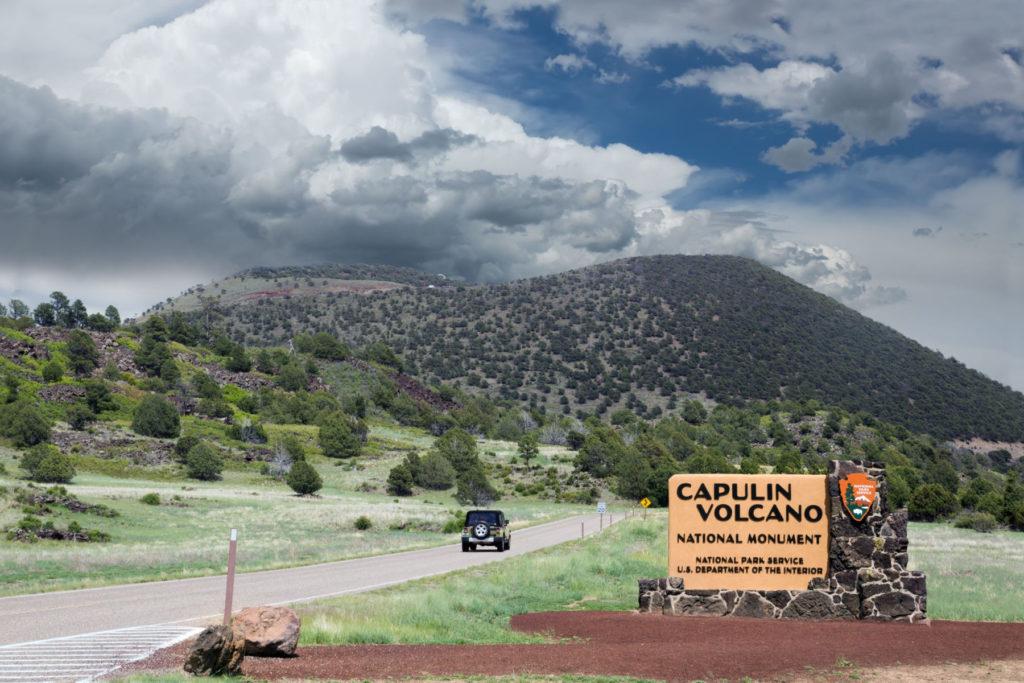
Hiking At Capulin
Capulin offers a variety of activities. There’s nearly five miles of hiking trails. These include:
- The Crater Rim Trail is a paved, 1 mile loop around the rim of the volcano. Informational waysides provide visitors information about the surrounding features in the Raton-Clayton Volcanic Field.
- The Crater Vent Trail is a 0.2 mile (one-way) trail leading to the bottom of the Capulin’s crater. This trail is paved and has an elevation change of 100 feet.
- The Lava Flow Trail is a one mile loop crossing one of the volcano’s lava flows while providing great views of the surrounding volcanic topography.
- The Boca Trail is an unimproved, 2 mile strenuous loop through the Boca area. This is the vent area at the base from which the volcano’s lava flows originated. The trail provides close up views of numerous geologic features.
- The Nature Trail is adjacent to the visitor center. Stop along the way at descriptors discussing plant life, geology, and wildlife. This is the only hiking trail where pets are permitted. (Source: NPS)
CHECK OUT: 10 MUST-SEE HISTORIC SITES IN ALABAMA
9. Historic El Morro National Monument
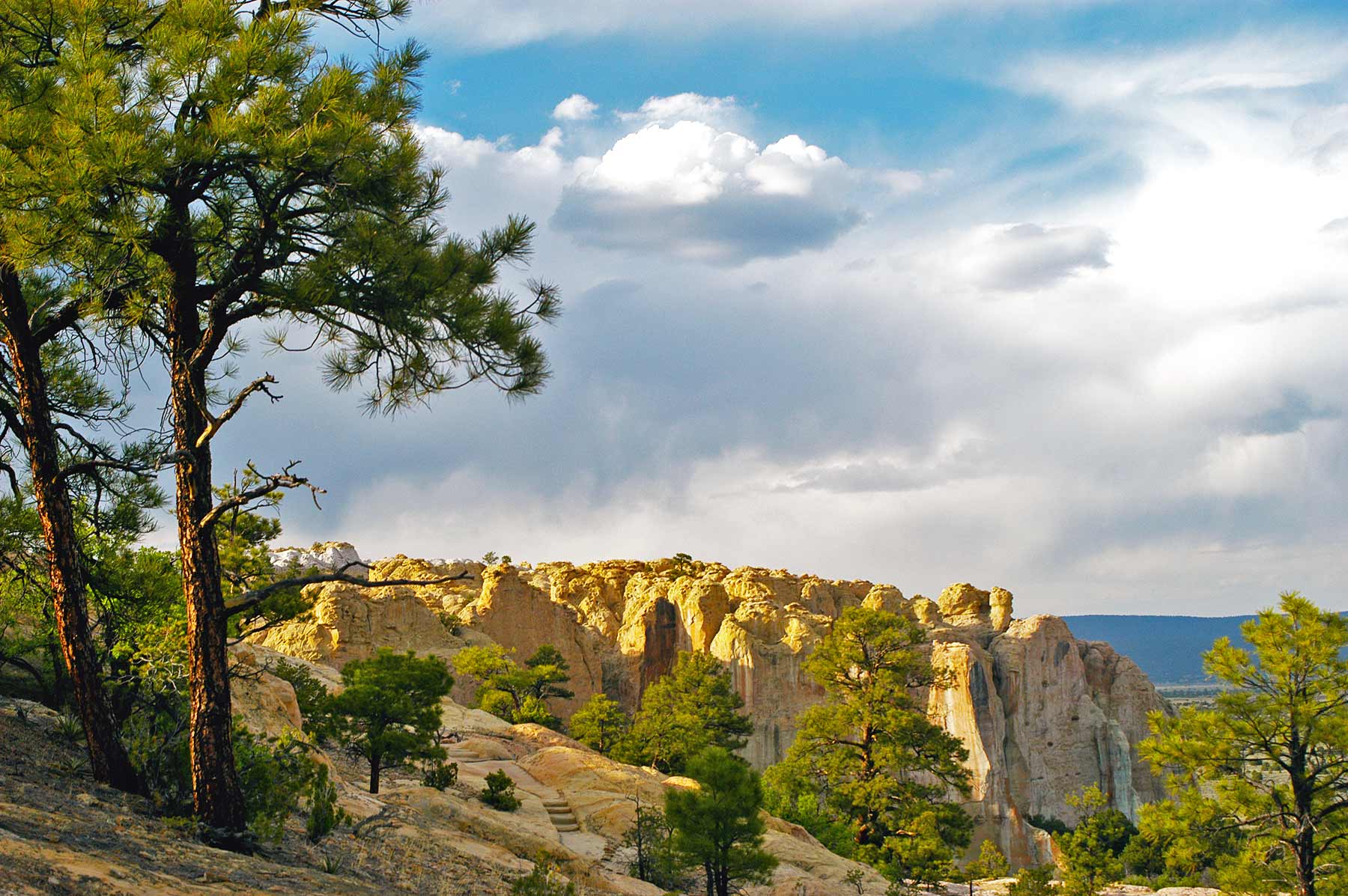
Geologic wonders abound in New Mexico and our next site is no exception. At #9 we have El Morro Monument.
It’s a historic site located in western New Mexico. The monument is named after a large sandstone promontory, known as El Morro, which stands at the base of a mesa and rises 200 feet above the surrounding plain.
The monument is a unique combination of natural beauty and human history, and it preserves the remains of an ancient puebloan village and a Spanish colonial settlement, as well as a series of inscriptions carved into the sandstone cliffs by travelers who passed through the area over the centuries.
The pueblo at El Morro was built by the Ancestral Puebloans around 1275 AD, and it was occupied for about 400 years. The pueblo consists of a series of stone and adobe structures, including multi-story buildings, kivas, and terraced agricultural fields.
Visitors can take guided tours of the pueblo, which include information about the pueblo’s history, architecture, and daily life.
The Spanish arrived in the area in the late 16th century and established a small settlement at the base of El Morro. They built a church and a Spanish colonial-style dwelling, which are also open to visitors.
The El Morro Inscriptions
The inscriptions on the cliffs, known as “El Morro Inscriptions” are one of the most unique features of the monument, they are a series of carvings, signatures, and messages left by travelers who passed through the area between the late 1500s and the early 1900s.
El Morro National Monument is open year-round and offers a variety of recreational activities, including hiking, picnicking, and wildlife viewing. It is a great place to learn about the history and culture of the Southwest, and it is also a great place to enjoy the natural beauty of the area.
The monument is a unit of the National Park Service and is a National Historic Landmark.
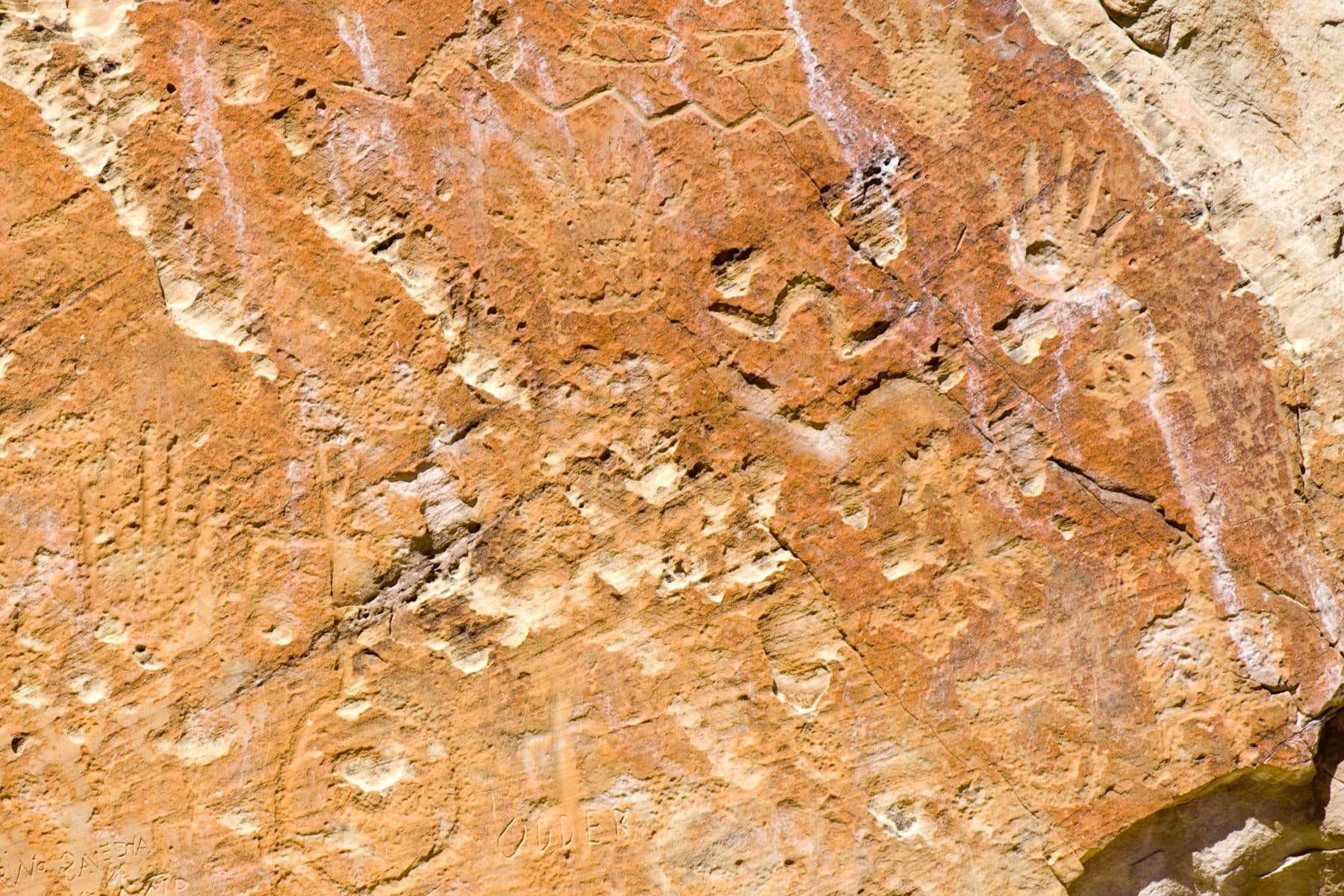
You’ll Have 2 Trails To Choose From
Visitors to El Morro have two wonderful hiking trails to choose from.
- The Inscription Trail will take you to a shady oasis (the pool). Along the way you’ll pass hundreds of Spanish and Anglo inscriptions, as well as pre–historical petroglyphs. This loop trail is paved, 1/2 mile in length, and wheelchair accessible with assistance.
- The Headland Trail is a 2–mile loop which includes the Inscription Trail. It continues to the top of the bluff. There you’ll be treated to spectacular views of the Zuni Mountains, the volcanic craters of the El Malpais area, and the El Morro valley. On this trail is the Ancestral Puebloan ruin, Atsinna, or “place of writings on rock.” There, between approximately 1275 to 1350 AD, up to 600 people lived in this 355 room pueblo.
CHECK OUT: 15 MUST-SEE HISTORIC SITES IN ARIZONA
8. Petroglyph National Monument
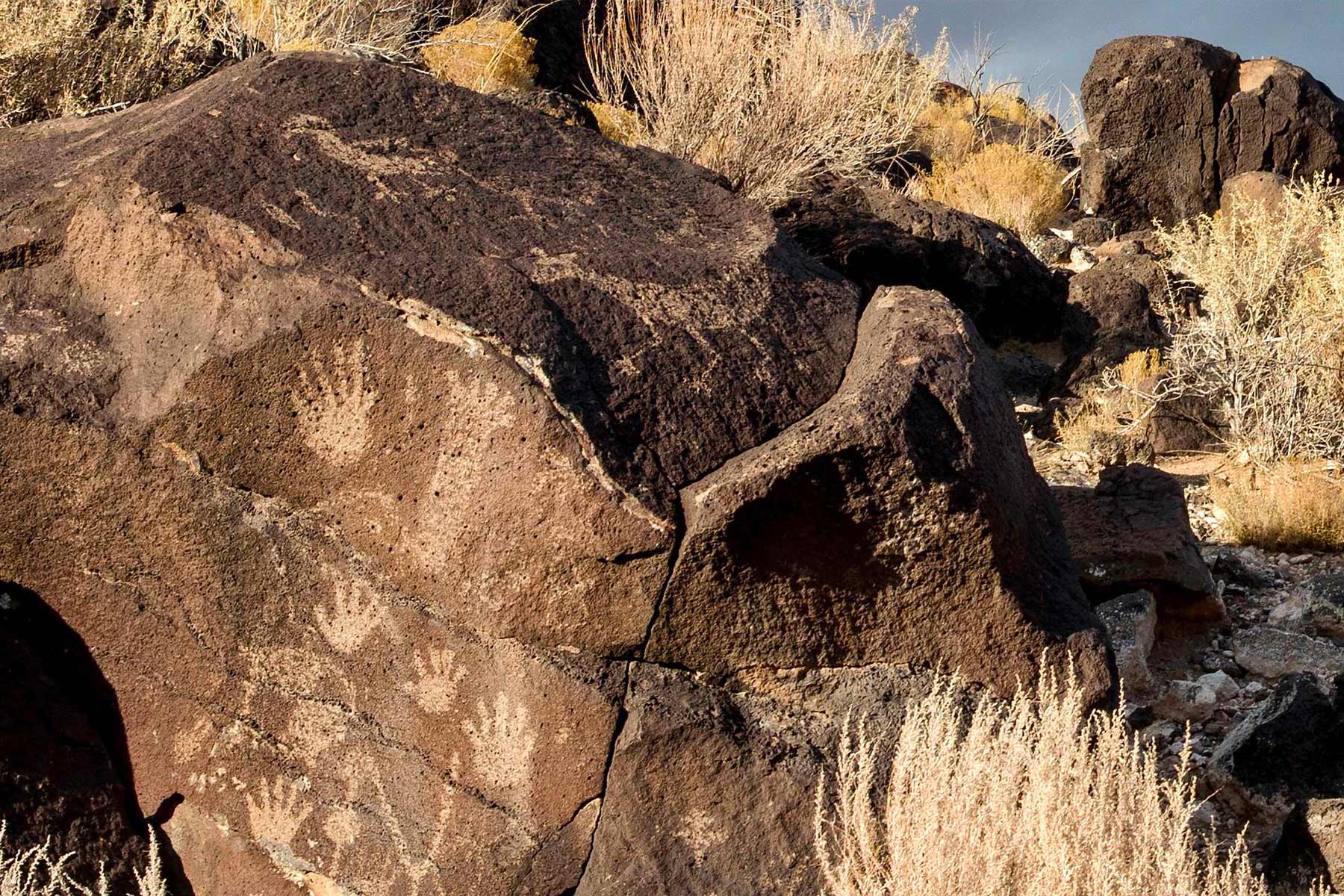
Our next historic site protects a variety of cultural and natural resources including five volcanic cones, hundreds of archeological sites and an estimated 25,000 images carved by native peoples and early Spanish settlers. Sound interesting?
At #8 on our list of the Best Historic Sites In New Mexico is Petroglyph National Monument.
It’s is a fascinating look into the past and it protects one of the largest petroglyph sites in North America, featuring designs and symbols carved onto volcanic rocks by Native Americans and Spanish settlers 400 to 700 years ago.
These images are a record of cultural expression and hold profound spiritual significance for contemporary Native Americans and for the descendants of the early Spanish settlers.
There is no museum or exhibits at this monument. At Petroglyph’s visitor center you can pick up a park brochure and trail maps.
Located on the western edge of the monument, the park’s trail system offers scenic miles of hiking around the volcanic cinder cones.
From there you’ll enjoy the clear views of the Rio Grande valley and the Sandia Mountains from the scenic overlook. These trails vary in length from 1 mile to 4 miles round-trip.
See The Amazing Petroglyphs
If you’re looking to see the petroglyphs the trails you’ll want to take include:
- Boca Negra Canyon: 1 hour, 100 petroglyphs, developed trail system.
- Rinconada Canyon: 2.2 miles round trip, 2 hours, 200-300 petroglyphs, undeveloped trail system, no water.
- Piedras Marcadas Canyon: 1.5 miles round trip, 1.5 hours, 300-500 petroglyphs, undeveloped trail system, no water, no restrooms.
- Volcanoes Day Use Area: 1 mile to 4 miles round trip, 1-4 hours, no petroglyphs, undeveloped trail system, no water.
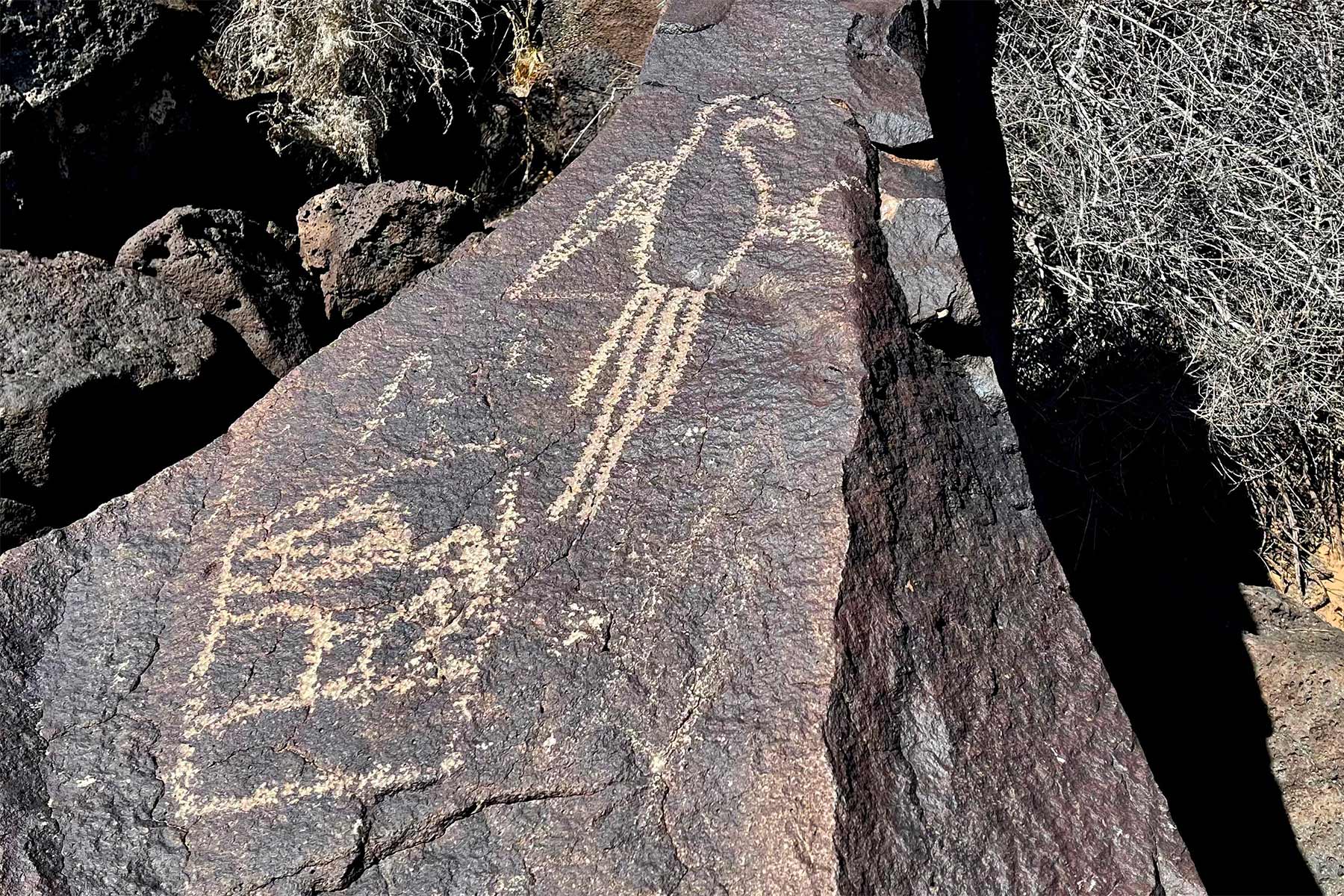
CHECK OUT: 10 MUST-SEE HISTORIC SITES IN MISSOURI
7. Fort Union National Monument

Our next historic site was the guardian for the Santa Fe Trail. Now how’s that for exciting! At #7 on our list of the Best Historic Sites In New Mexico is Fort Union National Monument.
It’s located in northeastern New Mexico, near the town of Watrous. The fort was established in 1851 by the United States Army to protect American settlers and travelers on the Santa Fe Trail, as well as to control and regulate trade with the Native American tribes in the region.
The fort played a significant role in the American-Indian Wars, and it was an important center of military activity during the expansion of the American West.
The Largest & Most Important Military Outpost In The Southwest
Fort Union was the largest and most important military post in the Southwest, and it served as a hub of trade and commerce, as well as a center of military operations.
It was also a key point of contact between the U.S. military and the Native American tribes in the region, and it was the site of many treaty negotiations and diplomatic meetings.
The fort was active for over 30 years and it was abandoned in 1891. The Fort Union National Monument was established in 1954 to preserve the ruins of the fort and to commemorate its role in the history of the American West.
The monument includes the ruins of the fort, a visitor center with exhibits and artifacts related to the history of the fort, and a self-guided trail that takes visitors through the ruins of the fort and provides information about its history and significance.
Fort Union National Monument is managed by the National Park Service and is open to the public for tours and educational programs. It is a popular destination for history enthusiasts, educators, and those interested in the American West.
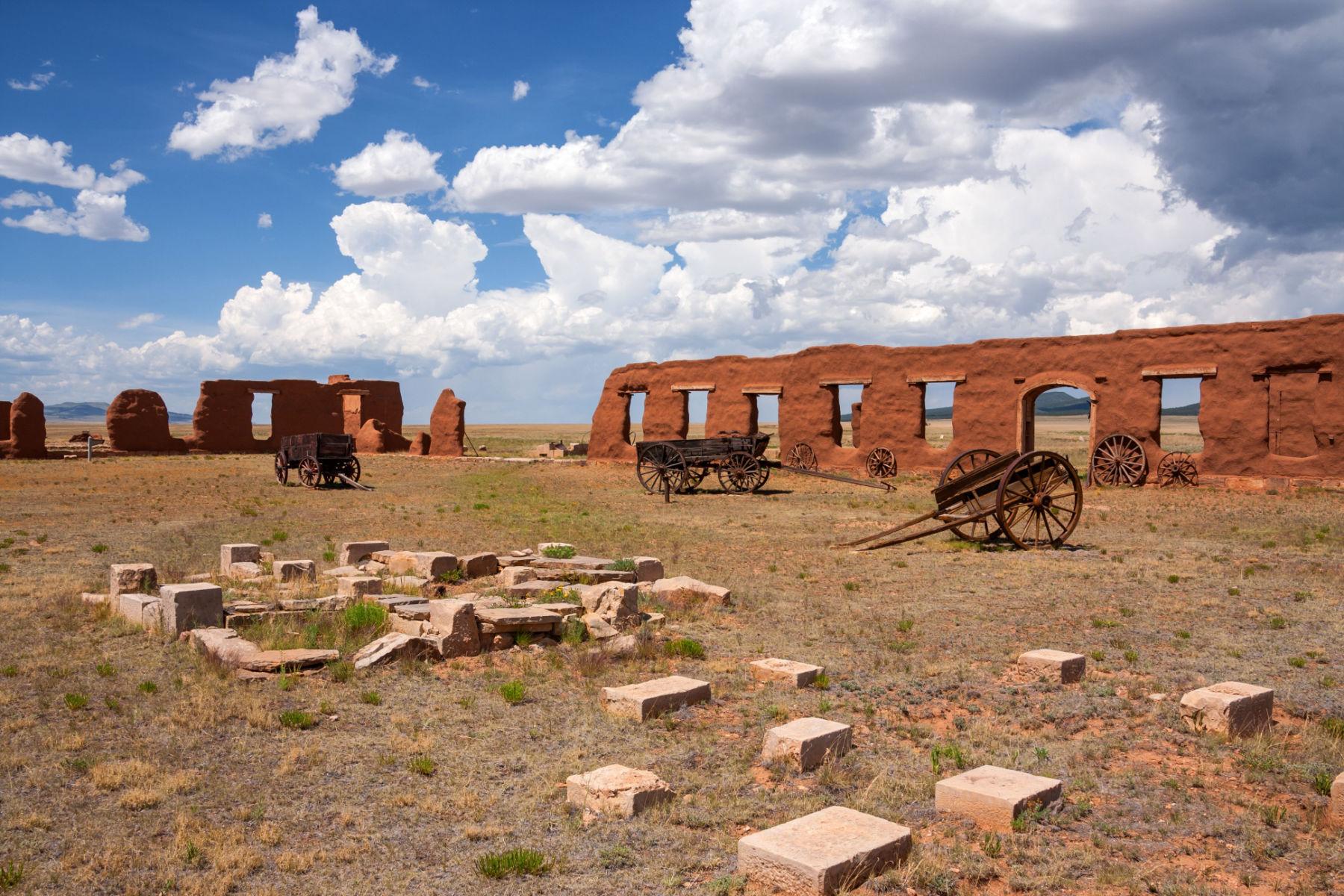
CHECK OUT: 18 SURPRISING NEW MEXICO NATIONAL PARKS
6. Salinas Pueblo Missions National Monument
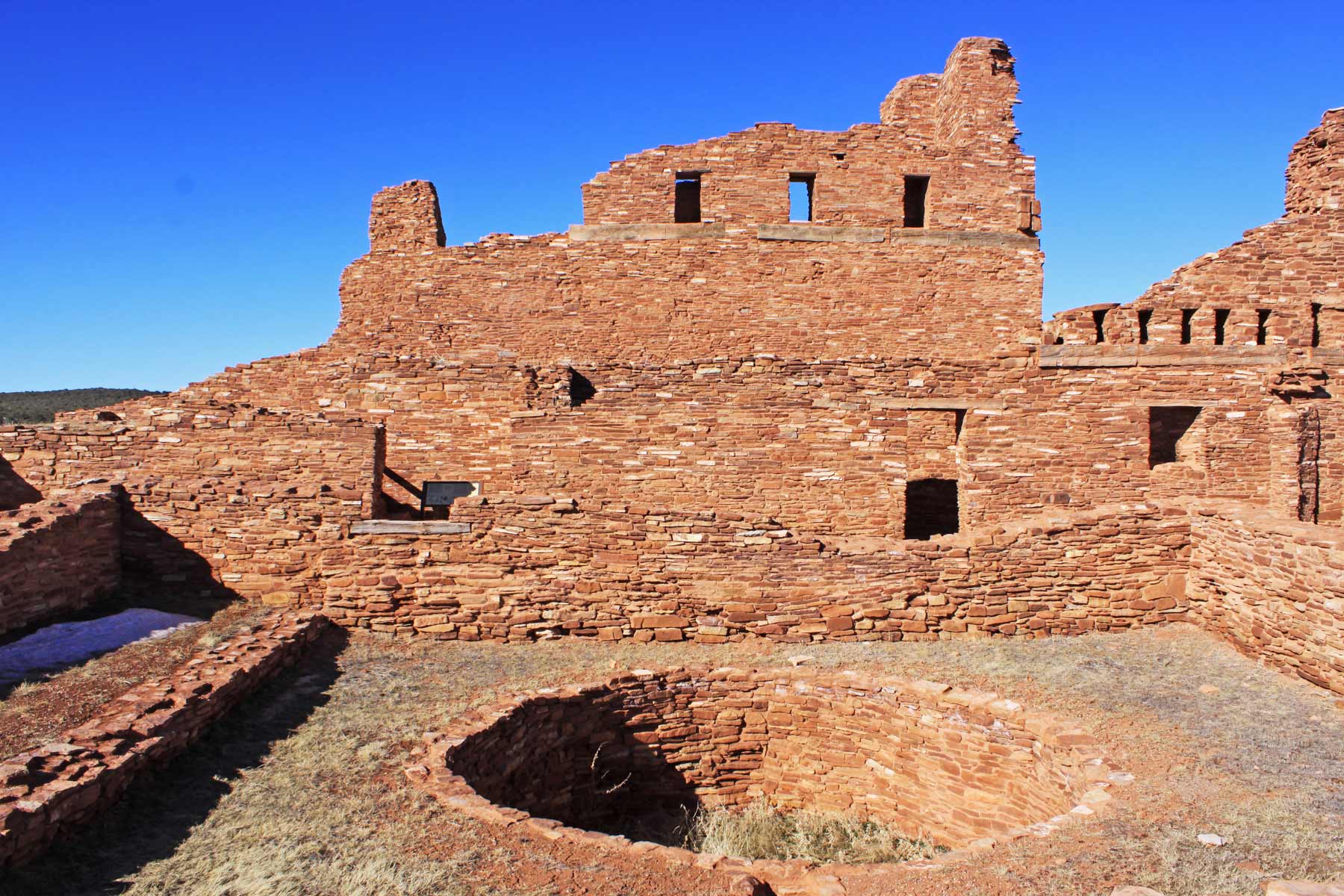
Our next historic site preserves the history and heritage of the Pueblo societies and Spanish missions of Abó, Gran Quivira, and Quarai, which continue to stand as reminders of a time when the cultures of the American Indians and the Spanish converged.
At #6 on our list of the Best Historic Sites In New Mexico is Salinas Pueblo Missions National Monument.
New Mexico abounds in the history of the American Southwest. At Salinas Pueblo Missions National Monument visitors will find three distinct sites offering a unique glimpse into a different time in history.
Things To See & Do
These sites serve as reminders of the Spanish and Pueblo peoples’ early encounters and prompt exploration of today’s interactions among different people. These sites include:
- Abo where you can enjoy a walk through the 17th century Mission of San Gregorio de Abó and see the Spanish Resettlement Structures.
- Quarai is a place where you can walk through the Nuestra Señora de La Purisima Conception de Cuarac, enjoy some spectacular bird watching and hike the one mile Spanish Corral Trail.
- At Gran Quivira you can explore an excavated Pueblo Mound and two Mission Churches. Or visit the museum and see the different tools and artifacts made by the people of Las Humanas.
In addition to the missions, the monument also contains the ruins of several Puebloan villages, including Gran Quivira, which was a major trade and cultural center in the 17th century.
Today, visitors to Salinas Pueblo Missions National Monument can explore the ruins of the missions and villages, learn about the history and culture of the Puebloan and Spanish peoples, and enjoy hiking and birdwatching in the surrounding desert landscape. The site also offers a visitor center with exhibits and educational programs.

CHECK OUT: 20 MUST-SEE HISTORIC SITES IN NEW YORK
The Top 5 Historic Sites In New Mexico
5. Chaco Culture National Historical Park
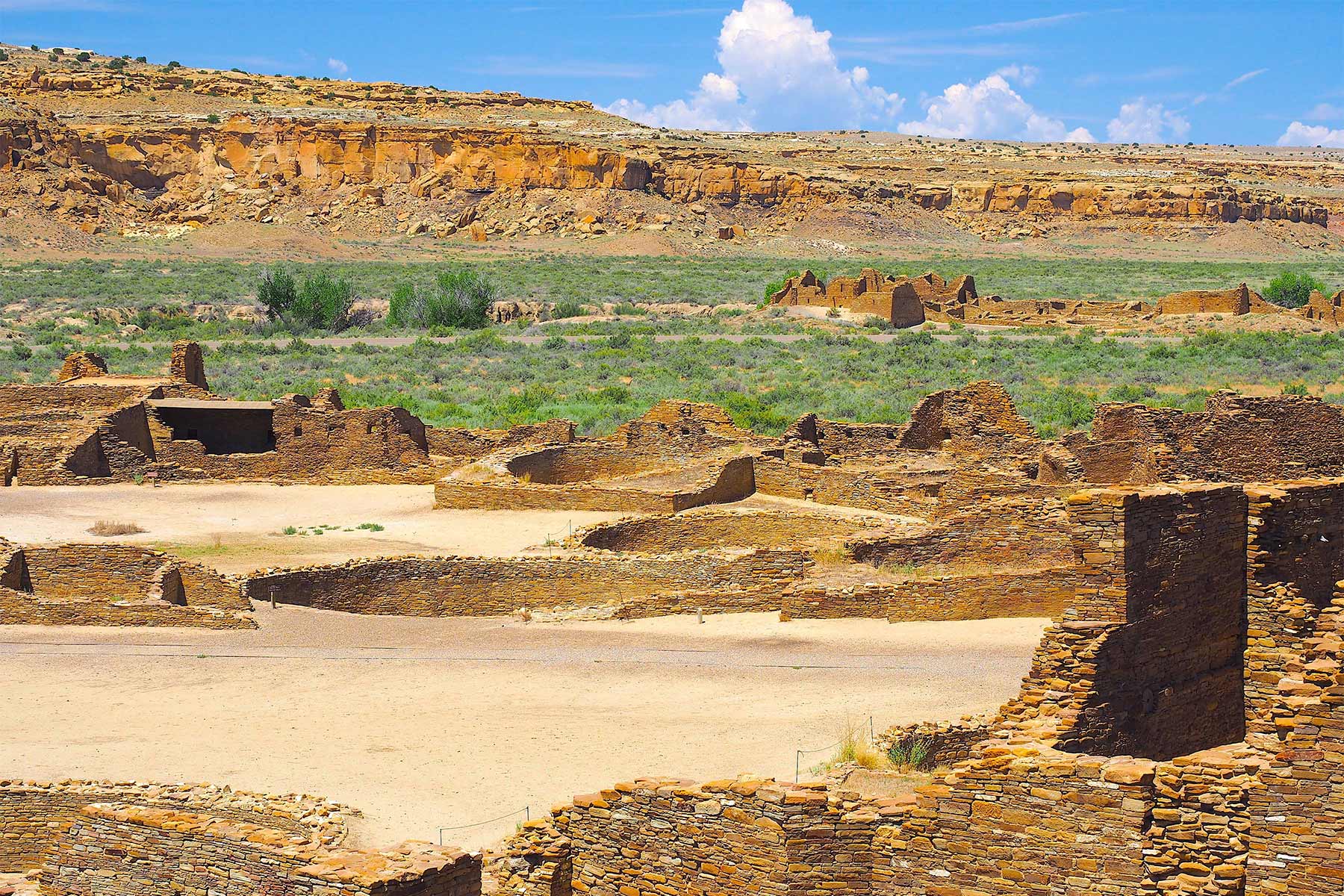
We’re on to our Top 5 Historic Sites In New Mexico. Our next site is remarkable for its monumental public and ceremonial buildings and its distinctive architecture – it has an ancient urban ceremonial centre that is unlike anything constructed before or since. At #5 is Chaco Culture National Historical Park.
The Chaco Culture National Historical Park contains the remains of an ancient civilization known as the Chacoans. This civilization developed in the area between 850 and 1250 AD and built a complex network of roads, great houses, and kivas, which were used for religious and political purposes.
The Chacoans also developed a sophisticated system of irrigation and agriculture, which allowed them to sustain a large population in the arid region.
The Chacoan civilization began to decline in the late 1200s, and by the time the first European explorers arrived in the area in the 1500s, the Chacoans had abandoned the region.
The ruins of the Chacoan civilization were first explored by American archaeologists in the late 1800s and early 1900s, and the Chaco Culture National Historical Park was established in 1907 to protect and preserve the remains of the ancient civilization.
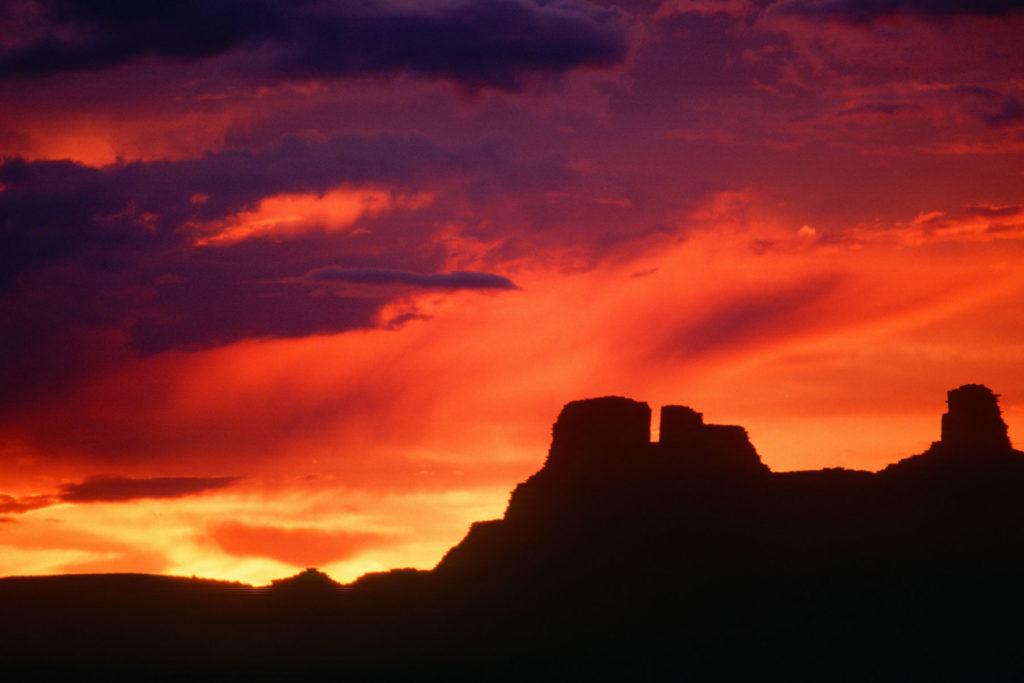
CHECK OUT: 10 BEST REVOLUTIONARY WAR SITES IN AMERICA
It’s A UNESCO World Heritage Site
Chaco Culture National Historical Park is a UNESCO World Heritage Site.
Here are some things to do at Chaco Culture National Historical Park:
- Explore the ancient ruins – The park contains dozens of well-preserved ruins, including massive stone structures called great houses, kivas (underground ceremonial chambers), and petroglyphs (rock carvings). Visitors can take guided tours or explore the ruins on their own.
- Attend a ranger-led program – The park offers a variety of ranger-led programs, including guided hikes, stargazing, and evening campfire talks. These programs provide insight into the history and culture of the Chacoan people.
- Hike the trails – The park has several hiking trails that offer spectacular views of the ruins and the surrounding desert landscape. The Pueblo Alto Trail, which leads to several great houses, is a popular choice for hikers.
- Visit the Chacoan Museum – The museum showcases artifacts and exhibits related to the Chacoan culture, including pottery, tools, and jewelry. Visitors can also watch a film about the history of the park.
- Attend a special event – The park hosts several special events throughout the year, including the summer solstice celebration and the annual astronomy festival. These events offer a unique opportunity to experience the park and its history in a new way.

4. Bandelier National Monument
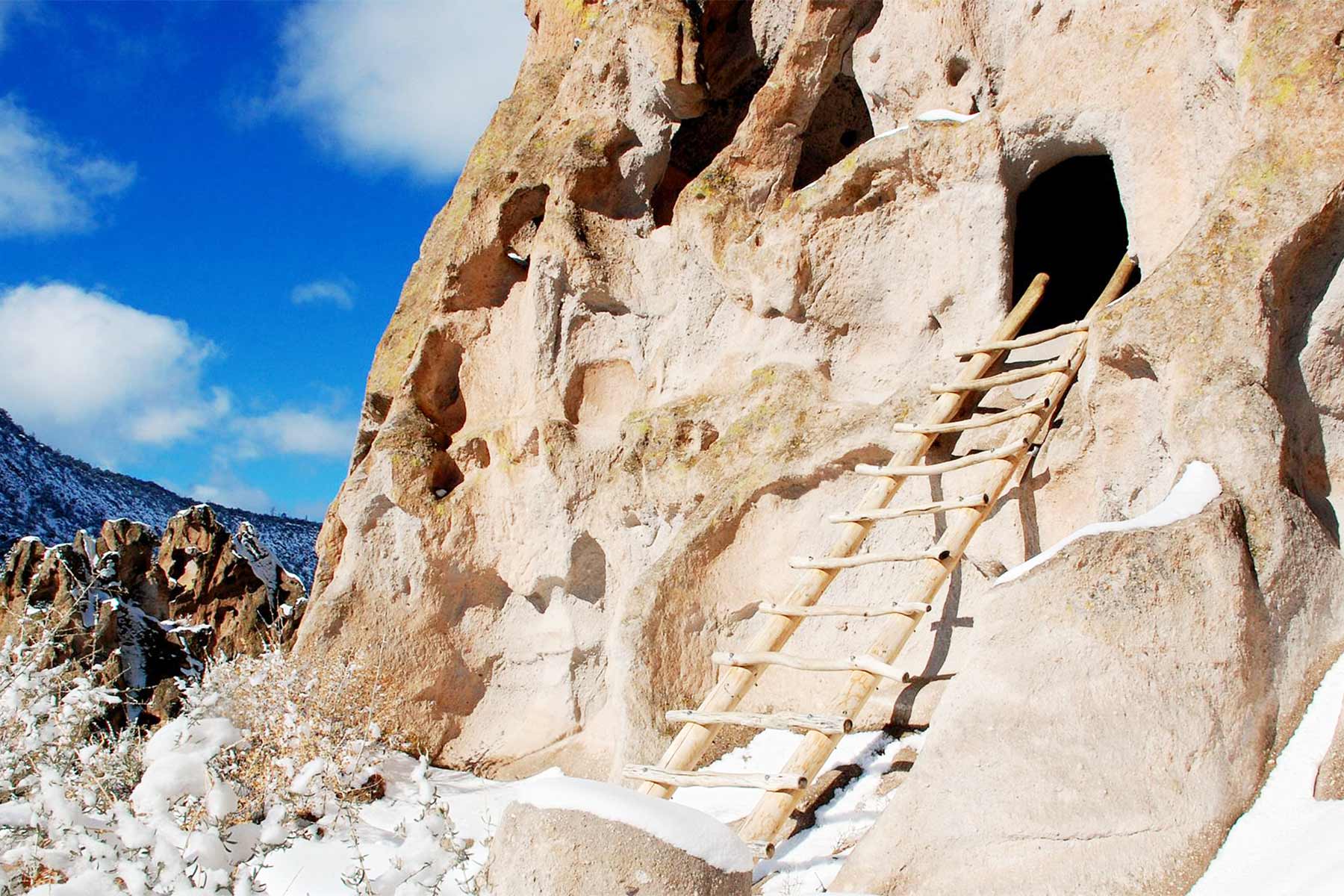
We’re on to the “Final Four.” Our next historic site is known for mesas, sheer-walled canyons and several thousand ancestral Pueblo dwellings. It also has over 33,000 acres of designated wilderness. At #4 on our list of the Best Historic Sites In New Mexico is Bandelier National Monument.
Bandelier National Monument is located in northern New Mexico. It protects over 33,000 acres of rugged wilderness, which includes canyons, mesas, and volcanic peaks.
The monument is named after the Swiss-American archaeologist Adolph Bandelier, who conducted extensive research on the Ancestral Puebloan people who lived in the area.
The monument is best known for its intricate network of caves and rock dwellings, which were built by the Ancestral Puebloans between 1150 and 1550 AD.
The most famous of these are the “Long House” and the “Ceremonial Cave,” both of which are open to visitors. These structures were built into the soft volcanic tuff cliffs and caves, and they were used for living, storage and ceremonial purposes.
An Extensive Network Of Hiking Trails
The monument also preserves an extensive network of hiking trails, which provide visitors with the opportunity to explore the rugged wilderness and take in the natural beauty of the area.
The trails lead visitors through the canyons, mesas, and volcanic peaks, providing great views of the surrounding landscape. The monument is home to a diverse array of plant and animal life, including mule deer, black bears, and a variety of bird species.
Bandelier National Monument is open year-round and offers a variety of recreational activities, including hiking, camping, picnicking and wildlife viewing.
Visitors can also take guided tours of the cave and cliff dwellings, and learn about the history, culture and daily life of the Ancestral Puebloan people who lived in the area.
The monument is a unit of the National Park Service and is a UNESCO World Heritage Site.
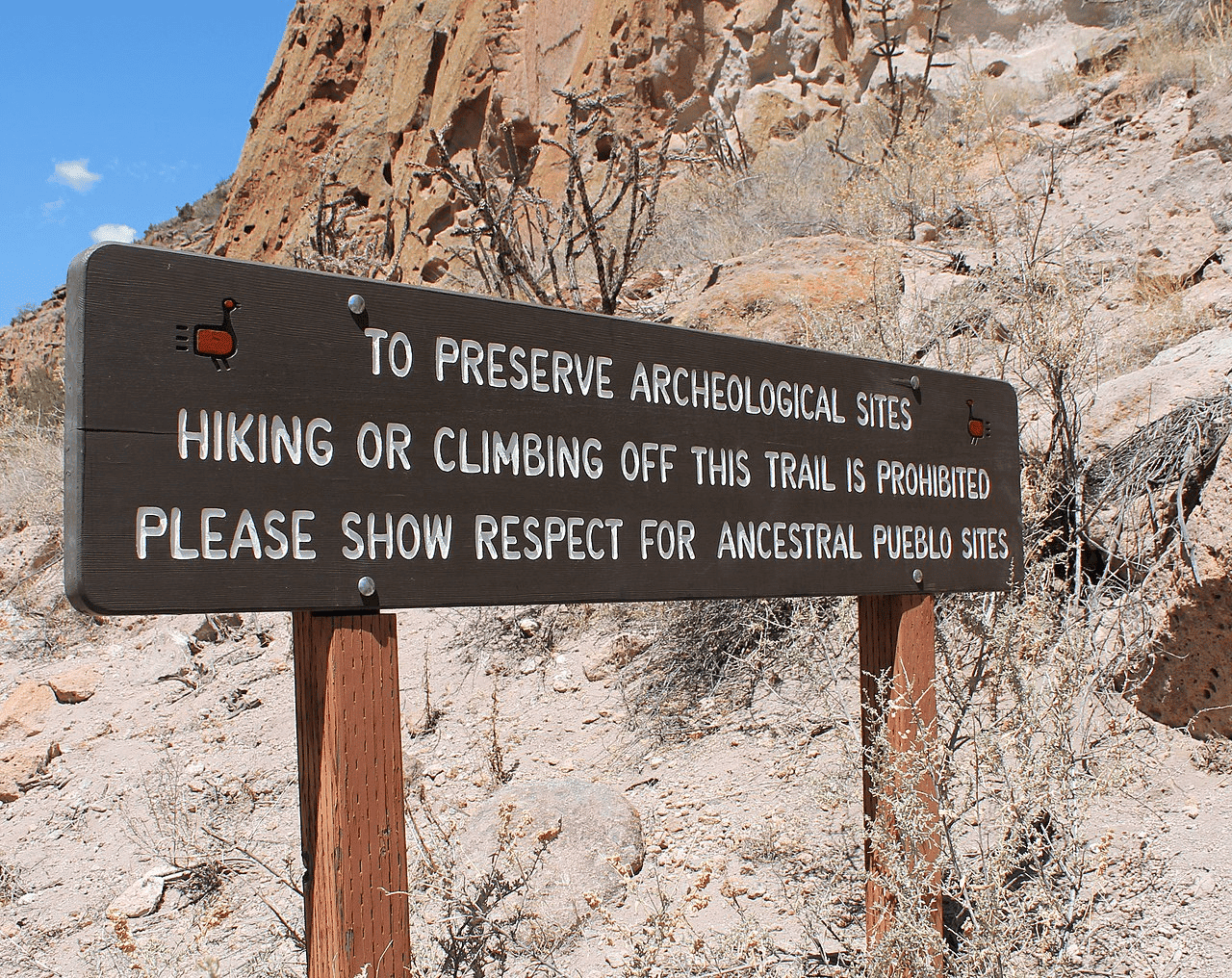
CHECK OUT: 10 BEST CIVIL WAR SITES IN AMERICA
3. Santa Fe National Historic Trail

It’s on to our final three historic sites. Next up is one of the most celebrated trails in American history. At #3 is the Santa Fe National Historic Trail.
It’s a trail that runs from Missouri to New Mexico. It covers a distance of about 800 miles, and it was a major transportation route for trade and commerce between 1821 and 1880.
The trail was used primarily by merchants, traders, and settlers, and it played a significant role in the opening and development of the American Southwest.
The trail begins in Missouri, near Independence, and follows the Arkansas River, through Kansas, Colorado, and into New Mexico. Along the way, it passes through several historic sites and landmarks, including Bent’s Old Fort National Historic Site, the Comanche National Grassland, and the Pecos National Historical Park.
Settlers In Search Of New Opportunities
The trail was first established in 1821, when the Mexican government lifted a trade ban with the United States, and American merchants began to travel to Santa Fe to trade goods.
The trail was also used by settlers who were moving westward in search of new opportunities, and by the military, who used it to protect American interests in the Southwest.
Today, the Santa Fe National Historic Trail is a unit of the National Park Service, and it is open to the public for hiking, horseback riding, and other recreational activities. Visitors can also take guided tours of the trail and learn about its history, culture, and natural resources.
The trail is also a National Historic Trail, and it is a great way to experience the rugged beauty of the American Southwest and learn about the history of the region.
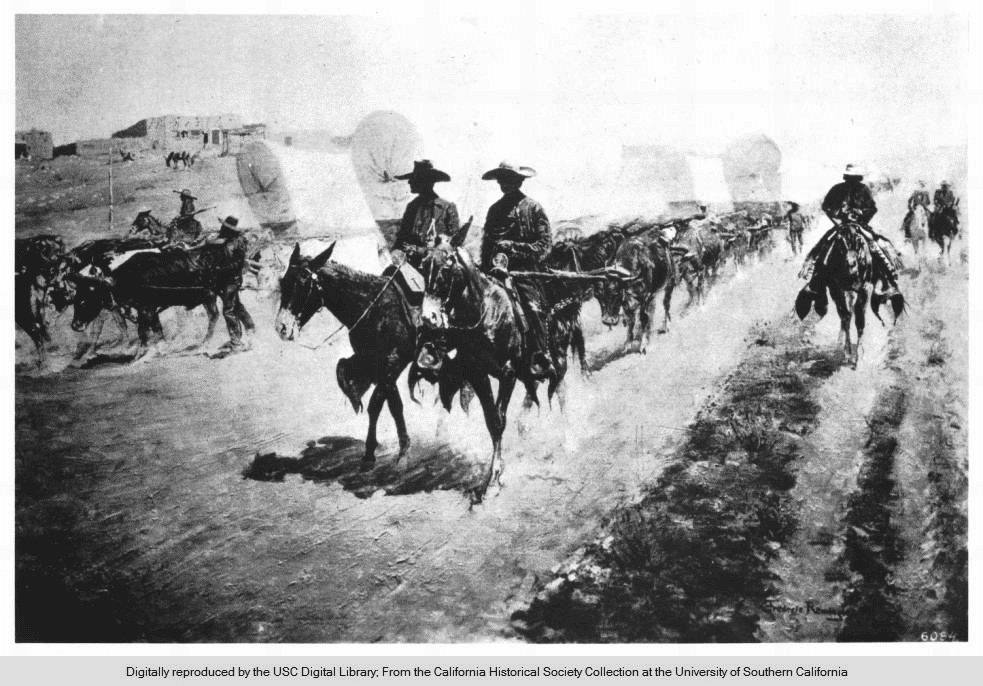
CHECK OUT: 25 BUCKET-LIST FAMOUS LANDMARKS IN AMERICA (MUST-SEE)
2. Manhattan Project National Historical Park

We’re down to the final two historic sites. In the runner-up spot at #2 is a place that changed the world by delivering the most destructive power ever known to humankind. At #2 on our list of the Best Historic Sites In New Mexico is The Manhattan Project National Historical Park.
The Manhattan Project National Historical Park is a collection of three sites in the United States that were central to the development of the atomic bomb during World War II.
The park was established in 2015 and includes the Hanford Site in Washington state, the Oak Ridge Reservation in Tennessee, and the Los Alamos National Laboratory in New Mexico.
The Manhattan Project was a top-secret research program launched in 1942 by the US government, with the goal of developing an atomic bomb before the Nazis.
The Hanford Site was responsible for producing the plutonium used in the bomb, Oak Ridge was responsible for the production of enriched uranium and Los Alamos National Laboratory was where the design and development of the bomb took place.
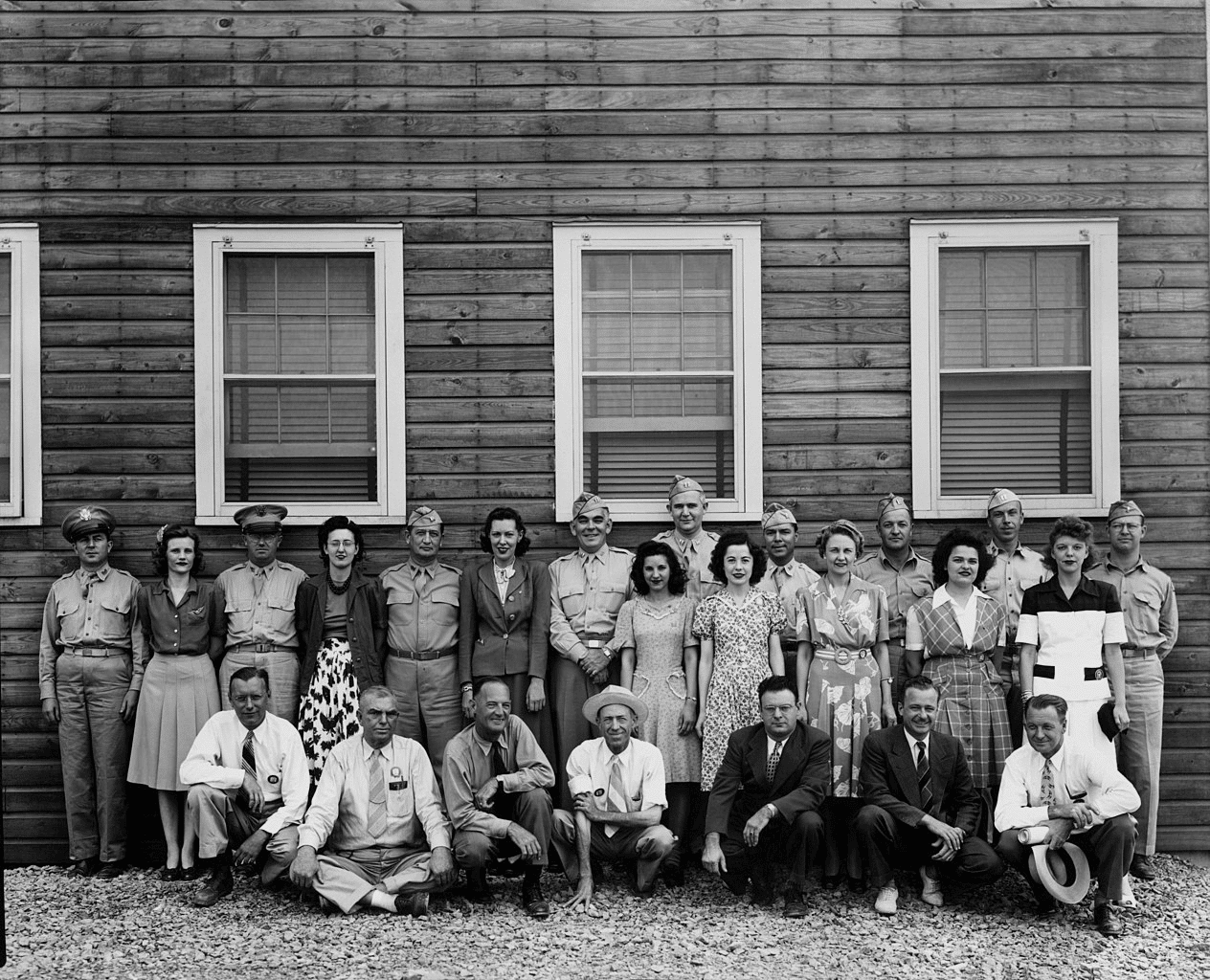
The Project Was Led By J. Robert Oppenheimer
The project was led by physicist J. Robert Oppenheimer and a team of scientists and engineers, who worked under intense pressure to develop the bomb as quickly as possible. The atomic bomb was first tested on July 16, 1945, in the desert of New Mexico.
The bomb was used in the bombing of the Japanese cities of Hiroshima and Nagasaki on August 6 and 9, respectively, resulting in the deaths of approximately 200,000 people, mostly civilians.
After the war, the Manhattan Project was disbanded, and the sites were used for various purposes including nuclear power production, nuclear weapons production, and environmental cleanup.
The three sites were designated as National Historical Parks in 2015 to recognize their role in American history and to allow for their preservation and interpretation for future generations.
Things To Do At Los Alamos, New Mexico
You can learn about the Manhattan Project by visiting the park’s visitor center in the historic town of Los Alamos. From there you can hike desert trails, explore local museums, enjoy guided tours and visit historic sites within the community.
Tours of the Los Alamos and Trinity Sites are only offered at specific times of the year. The Los Alamos tours take visitors to historic buildings including Pond Cabin and a building that Nobel Laureate Emilio Segrè and his team used.
Visitors will also see Battleship Bunker, a building used for implosion diagnostic testing, and the Slotin Building where physicist Louis Slotin succumbed to a deadly radioactive accident.
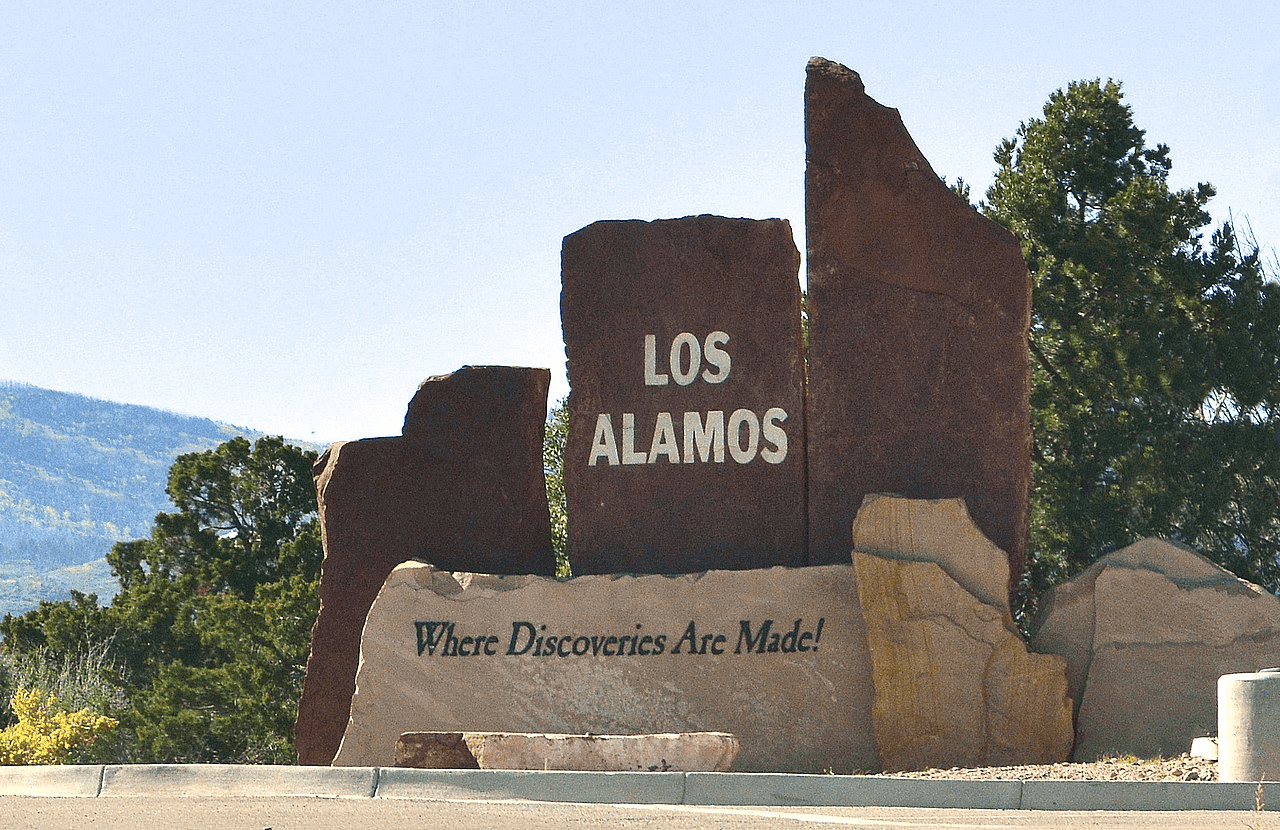
Other Places In Los Alamos Accessible To The Public
There are other fascinating places where you can go in Los Alamos and these include:
- The Los Alamos Nature Center which gives you the chance to learn more about the incredible wildlife and natural history in this area.
- The Los Alamos History Museum. It’s located in downtown Los Alamos. There you can learn about the stories of the atomic secret city from multiple perspectives via indoor and outdoor venues, historic buildings, artifacts, documents, photographs, audio and video recordings of personal stories, and interactive visitor experiences.
- You can also go to the Bradbury Science Museum. There you’ll learn about the scientific history of Los Alamos and explore interactive exhibits.
- If you’re more interested in nature than science you can also hike the Kwage Mesa Trail where you’ll have a spectacular view of the canyons and mesas of the Pajarito Plateau.
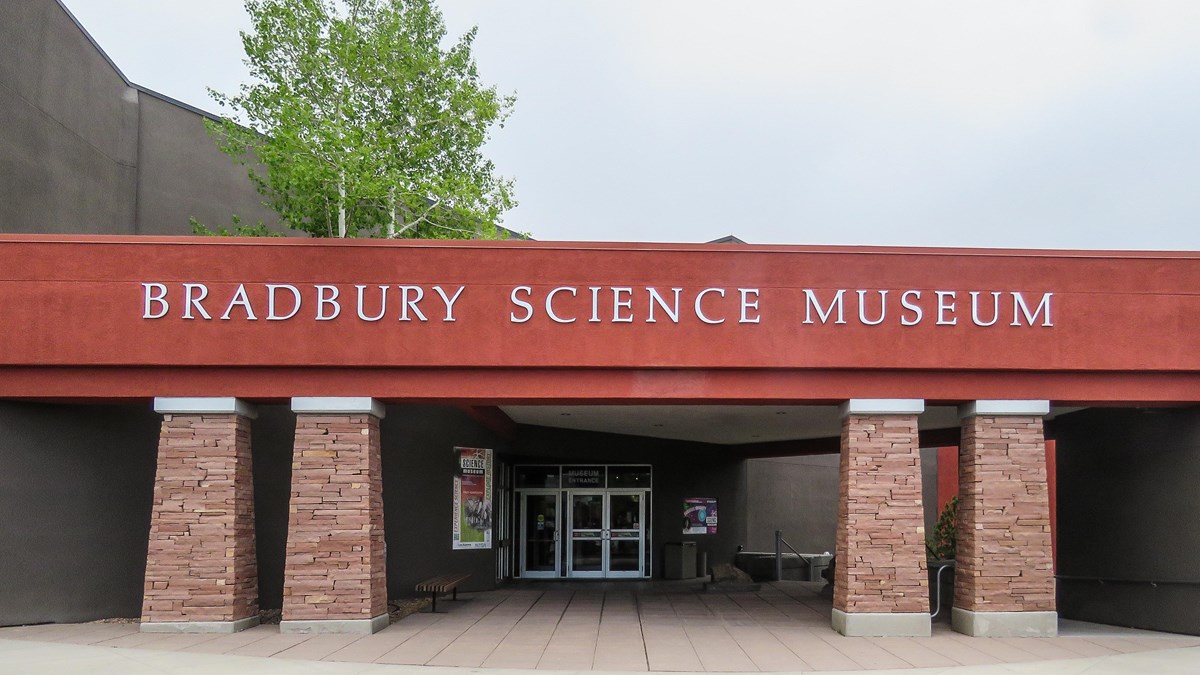
CHECK OUT: LIST OF 128 BEST US NATIONAL MONUMENTS RANKED
1. Gila Cliff Dwellings National Monument
As the #1 Historic Site In New Mexico, More Than Just Parks has selected the Gila Cliff Dwellings National Monument.
It’s a national monument located in southwestern New Mexico. The monument protects a series of ancient cliff dwellings built by the Mogollon people, an Ancestral Puebloan culture, who lived in the area between the 12th and 14th centuries AD.
The monument includes five cliff dwellings structures, which were built into a series of limestone caves in the Gila Wilderness. The dwellings are well-preserved and provide a unique glimpse into the lives of the people who built them.
The Gila Cliff Dwellings are the most significant feature of the monument. The dwellings consist of rooms built into five natural caves, which are tucked into a towering limestone cliff, visitors can access the dwellings by hiking a 1-mile loop trail.
Inside the caves, visitors can see the remains of the ancient puebloan people’s homes and storage rooms, including the remains of fireplaces, storage bins and even some original plaster.
Visitors Can Learn About The Culture Of The Mogollon People
The monument also has a visitors center, where visitors can learn more about the history and culture of the Mogollon people, and the natural history of the area. Visitors can also take guided tours of the cliff dwellings and learn more about the construction techniques and the daily life of the ancient people who lived there.
The Gila Cliff Dwellings National Monument is a great place to learn about the history, culture and daily life of the ancient Puebloan people, and to explore the natural beauty of the Gila Wilderness.
The monument is open year-round, but some facilities may be closed during the winter months due to snow. The monument is a unit of the National Park Service.
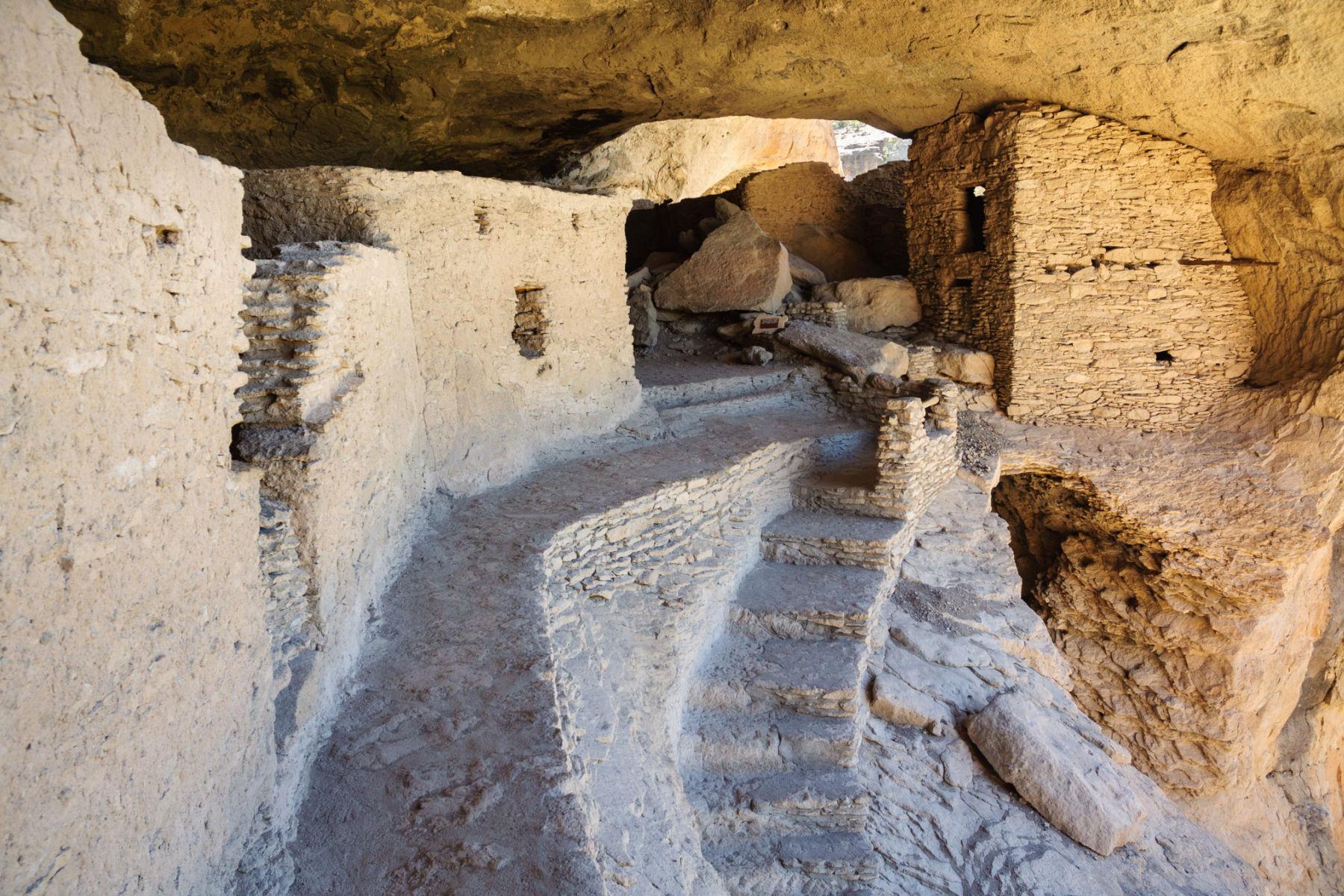
CHECK OUT: ALL 63 US NATIONAL PARKS RANKED BY EXPERTS
Things To Do Include The Following:
- Explore the cliff dwellings – The park contains several well-preserved cliff dwellings that visitors can explore. These structures were built into natural caves and alcoves in the cliffs, and they offer a glimpse into the daily life of the Mogollon people.
- Take a guided tour – The park offers guided tours led by rangers, which provide insight into the history and culture of the Mogollon people. These tours are available seasonally, so check with the park before you go.
- Hike the trails – The park has several hiking trails that offer stunning views of the cliff dwellings and the surrounding Gila Wilderness. The short and easy Cliff Dwellings Trail takes visitors to the main dwellings, while the more strenuous TJ Corral Trail provides a longer and more challenging hike.
- Visit the visitor center – The park’s visitor center has exhibits and educational programs about the history and culture of the Mogollon people, as well as information about the park’s wildlife and geology.
- Attend a special event – The park hosts several special events throughout the year, including guided night hikes, stargazing programs, and traditional Native American dances. These events offer a unique way to experience the park and its history.
List Of Historic Sites In New Mexico
- Gila Cliff Dwellings National Monument
- Manhattan Project National Historical Park
- Santa Fe National Historic Trail
- Bandelier National Monument
- Chaco Culture National Historical Park
- Salinas Pueblo Missions National Monument
- Fort Union National Monument
- Petroglyph National Monument
- El Morro National Monument
- Capulin Volcano National Monument
- Palace of the Governors
- Acoma Pueblo
- El Santuario de Chimayó
- Mesilla Plaza and Historic District
- Fort Bayard Historic District
Why Trust Us About Historic Sites In New Mexico?
We’re Jim Pattiz and Will Pattiz, collectively known as the Pattiz Brothers and we absolutely LOVE the national parks.
You should probably know that we don’t just make this stuff up out of thin air. We’ve spent our entire adult lives exploring and filming America’s national parks and public lands.
We’ve worked with the National Park Service, the Department of Interior, USDA, U.S. Forest Service, and more for years creating films on important places and issues. Our work has been featured in leading publications all over the world and even some people outside of our immediate family call us experts on the national parks.
And, in 2018, our father – having spent a lifetime teaching history – joined us so that he could help us to tell the stories behind these amazing places.
Meet The Parks Brothers
We Hope You’ll Follow Our Journey

Our goal here at More Than Just Parks is to share the beauty of America’s national parks and public lands through stunning short films in an effort to get Americans and the world to see the true value in land conservation.
We hope you’ll follow our journey through the parks and help us to keep them the incredible places that they are. If you’re interested in joining the adventure then sign up below!
Related Links
What Is A National Park? To learn more about the difference between the various National Park Service designations check out our article that explains everything!
New Mexico National Parks: 18 SURPRISING New Mexico National Parks
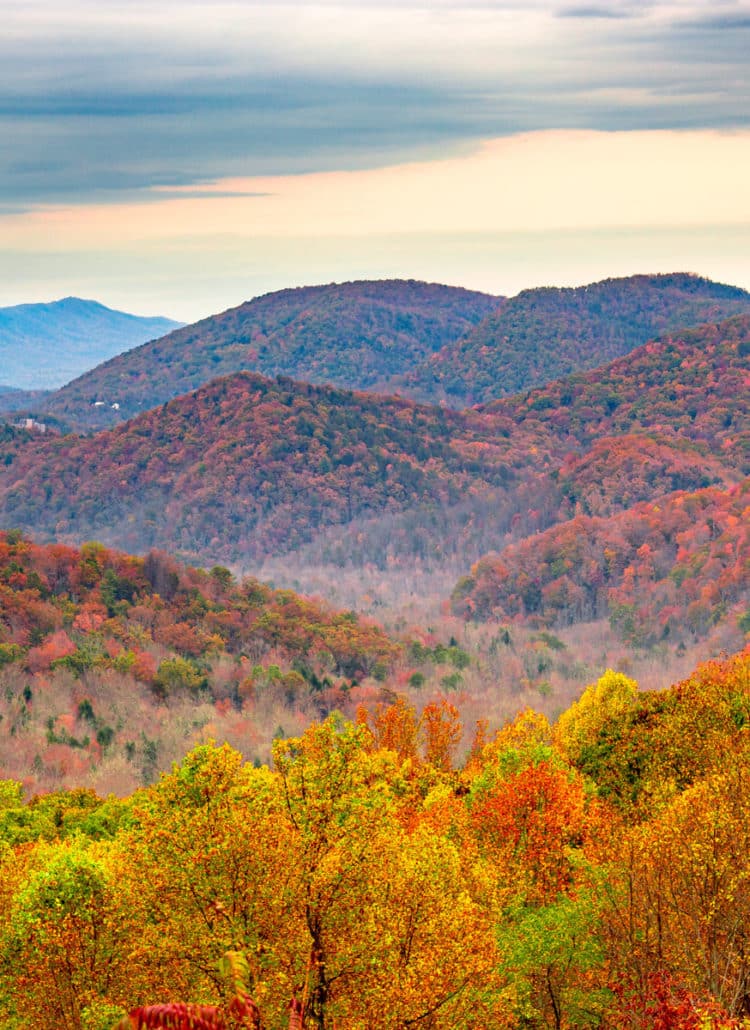


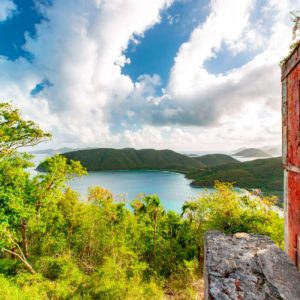

Leave a Reply